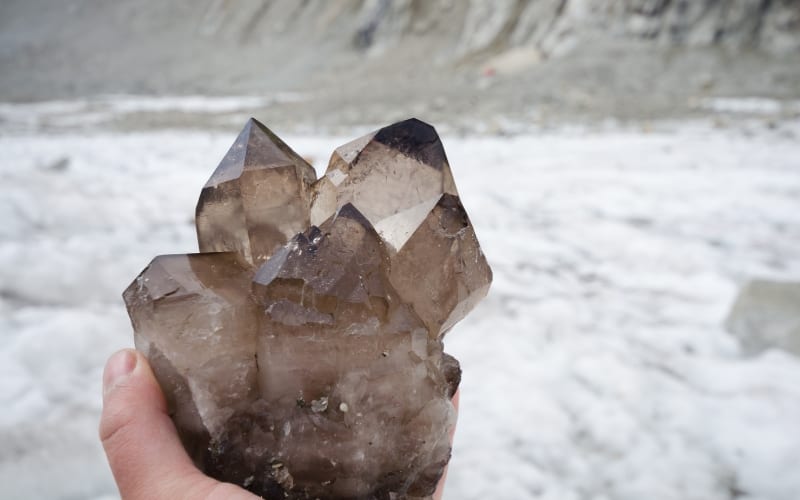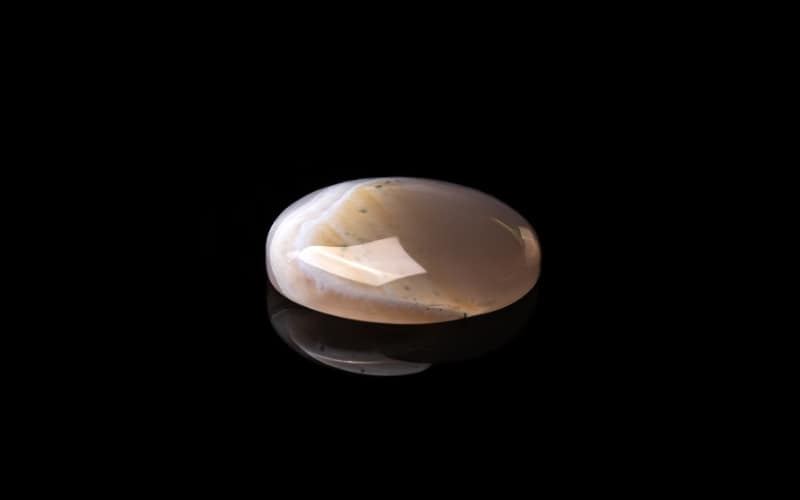
Seeking Beauty, Uniqueness, And Versatility? Look No Further Than Brown Gemstones
Brown evokes richness, warmth, comfort. Brown gemstones may not immediately come to mind, but many generate positive feelings. And versatile brown in its many shades complements nearly all other colors. Display the unparalleled beauty and unique characteristics of brown gemstones as the centerpiece or an accent in your jewelry for a stunning look.
Variety
You have dozens of brown gemstones from which to choose. All are different, allowing you to express your individuality. The harder gems may be faceted, while the softer ones are better as cabochons. Some may be left in their natural shape and simply polished before being made into one-of-a-kind jewelry.
Can It Be Scratched?
The Mohs Scale describes the hardness of gemstones. It classifies gems by their susceptibility to damage. How easily a stone can be scratched is a guideline as to how it can be best used in jewelry. Hardness is rated from 1 to 10, with 10 being the hardest. You can use hard gemstones in any style of jewelry. The softer ones are typically limited to pendants or earrings.
Appearance
Hardness is only one way of categorizing gemstones. Others include color, countries where they are mined, mineral family, new discoveries, and how they are used. Since there are many brown gemstones, differences in appearance are a good way in which to describe them. Some are translucent or transparent, while others are opaque. And then there are those which exhibit special optical effects. Read on to learn more about the outstanding gemstones in each category.
Favorite Transparent and Translucent Gemstones
When you can see through a gemstone to whatever is behind it, it’s said to be transparent. A translucent gemstone allows light to pass through it but doesn’t allow you to see images behind it. Translucent and transparent brown gemstones are nearly always faceted.
Brown Diamond

Diamonds are formed beneath the Earth’s surface when heat and pressure compress carbon atoms into a crystal lattice. Diamonds have the distinction of being the hardest of all substances. When the carbon is pure, the gem is colorless. The addition of other minerals creates a rainbow of colored diamonds. These are usually referred to as fancy diamonds, of which brown is one. However, there is more than one shade of brown fancies, from pale to almost black. Common names include champagne, chocolate, and cognac.
Brown diamonds are evaluated in the same way as other diamonds, using the 4 C’s. That is, color, clarity, cut, and carat. For fancies, like brown diamonds, color is described using hue, which is the primary color. Saturation and tone, which are the intensity of the hue and how light or dark the stone appears, are also considered. Clarity is a measure of blemishes that can impair the light passing through a gemstone.
Because of their hardness, diamonds may be cut into any shape and used in all forms of jewelry. Although brown diamonds are impervious to scratching, they will chip or break easily if struck.
Brown Topaz

Brown topaz is treasured for its richness of color. It’s often mistaken for more valuable gems. It is formed from aluminum and fluorine, making it harder than most brown gemstones. The Mohs rating is 8, so brown topaz can be used in all kinds of jewelry. Very few blemishes interfere with the light passing through it. Faceting shows off the brilliance of brown topaz.
Brown topaz is often irradiated to enhance the color. While this is generally considered standard practice, you should be aware of it before purchasing. Some stones may also be heat-treated to deepen the color. It’s also important to know that the color of brown topaz may fade in sunlight, so care must be taken when wearing it.
Smoky Quartz

Smoky quartz is a hard gemstone with color ranging from very light brown to nearly black. It’s rated 7 on the Mohs Scale. Smoky quartz may be transparent but is more often translucent. In some circles, the very dark variety is known as morion. The darker shades can be opaque. Smoky quartz gets its brown tones from natural gamma irradiation. The more radiation, the darker the brown.
Although smoky quartz is typically faceted, it’s also attractive when mounted as a cabochon. It’s suitable for use in all types of jewelry. The color often fades if exposed to excessive heat or UV light. Accordingly, smoky quartz jewelry should be stored in a dark place when not being worn.
Two Unique Opaque Gemstones
Opaque gemstones are those that you can’t see through. The passage of light is blocked by the density of the crystals of the minerals within the gem. Although opaque gemstones don’t necessarily have the brilliance of transparent gems, that doesn’t impair their beauty. Many display a pleasing soft glow, especially when cut in cabochons and polished.
Brown Jade
The name jade refers to the minerals nephrite and jadeite. Jadeite is composed of sodium and aluminum; nephrite contains calcium, magnesium, and iron. They look the same and are used in similar ways. It’s only in contemporary times that gemologists began distinguishing between the two. Most people continue to call both jade. Jade is traditionally associated with green. Both gems, however, can exhibit a range of colors, including brown jade. Jadeite has an average Mohs hardness of 7, with nephrite slightly softer.
Jade is frequently cut into cabochons rather than faceted. It’s a favorite for beads. Many kinds of large and small carvings are created from jade. Smaller jade objects are often incorporated into pendants and earrings. Large pieces of jade can be carved into rings or even bracelets. If you want genuine nephrite or jadeite, avoid purchasing “jade” that has another name associated with it. For example, stones with names like Amazon Jade, Indian Jade, and Oregon Jade are only a few of the other minerals falsely sold as jade. To add to the confusion, some descriptors are valid, such as Imperial Jade or Russian Jade.
Brown Jasper

Chalcedony is a particular form of quartz. It’s the primary mineral in several gemstones. Pure chalcedony is typically colorless. Other minerals become part of it when it’s being formed. Depending on what they are, they create a variety of colors, appearances, and other features. Each becomes a specific gemstone. One of these is brown jasper, which includes iron dioxide and goethite. Brown jasper may have stripes, spots, or patterns due to those minerals.
Brown jasper is hard, with a Mohs rating of 7. It is seldom faceted. Because of the distribution of the minerals throughout the stone, each cabochon is unique. Brown jasper is suitable for most types of jewelry.
Gemstones Known For Their Special Visual Effects
Some gemstones appear transparent or translucent in particular circumstances. In other conditions, they look opaque. Their changeability can be due to trace minerals within the stone, the way the stone is cut, or the lighting, among other factors. Some gemstones display two colors simultaneously, while others change color under light. Other gemstones flash different colors when rotated under a light. Gemologists label that phenomenon pleochroism.
Adularescence, also known as schiller, is a form of luminescence that appears beneath the surface of a gemstone. It usually has a bluish glow to it. It’s found only in gems composed of inner layers of minerals that scatter light. The light rays “bounce” between the layers.
Chatoyancy is a special type of reflection that looks like feline eyes. It results from minute impurities arranged in parallel lines within the stone. The lines appear to be a band of moving light just under the surface. The stones are usually cut as cabochons to best display the “eye.”
Gemstone fire is flashes of color emitted by the stone when light hits it. The color of the flashes depends on the minerals in the stone, the structure of the crystals, and the type of light. Most gemstones known to exhibit fire are faceted to maximize the fire. If the light flashes are colorless, they are referred to as brilliance rather than fire.
Andalusite

Andalusite is a rich brown gemstone valued for its strong pleochroic features. Not only does the color change as the stone is rotated, many of the colors appear at the same time. No two andalusite gems look the same. Although andalusite is now mined in several countries, it gets its name from Andalusia in Spain where it was first discovered.
It’s an aluminum mineral with a Mohs hardness of 7.5, making it suitable for most jewelry. Andalusite is typically faceted to show off the ever-changing play of colors. Although opaque varieties exist, translucent and transparent Andalusite gems are preferred. The transparent types are the rarest and most expensive.
Brown Moonstone

Moonstone is highly valued for adularescence, which glows like moonlight. Several varieties of stones have been given the name moonstone because of their adularescence. The gem used in jewelry is the adularia moonstone. It has a Mohs Scale hardness of 6 to 6.5. Adularia moonstone ranges from colorless to nearly all colors, including brown.
Most adularia moonstones are translucent. They’re usually cut in cabochons or beads to highlight the adularescence. Some moonstones exhibit a cat’s eye effect. Because of its popularity and uniqueness, adularia moonstone has many imitators. These can include other gemstones that have been heat-treated. Any stone that shows even minor adularescence is often incorrectly labeled moonstone. Adularia moonstones are mined in numerous locations, with brown ones sometimes found in Greenland.
Fire Agate

Fire agates are a member of the chalcedony family. Other minerals, especially iron oxide, which is responsible for its brown color, give it many iridescent colors. Each fire agate is unique, as the minerals in each may differ in kind and quantity. They also have unique patterns visible on the surface. While fire agates are named for their exhibition of color, some are valued for their schiller. They are hard, with a Mohs rating of 7. Fire agates are extremely versatile and can be used in all types of jewelry.
Genuine fire agates are expensive for two reasons. For starters, they are rare. They are formed as a result of volcanic activity and are found in only a few locations. The second factor making them costly is how difficult they are to cut. Sometimes, outer layers must be pared away to reveal the fiery interior. Cabochon is the preferred cut, but many fire agates are simply polished and hand-made into free-form jewelry.
Sillimanite
Sillimanite, also known as fibrolite, has the distinction of having both opaque and transparent varieties. It’s aluminum, but the crystal structure differs from other aluminum gems, which gives sillimanite its distinctive characteristics. It can be found in many colors, with brown being one of the opaque varieties. Some sillimanite gemstones exhibit adularescence or pleochroism, and the opaque ones can be chatoyant.
Sillimanite is rated 6.5 - 7.5 on the Mohs scale, making it suitable for most types of jewelry. Sillimanite is challenging to cut, especially if it’s to be faceted. That, combined with its rarity, made sillimanite more valued by collectors than jewelers until recently. Its beauty and unique optical properties are changing that. It’s now being used in original jewelry that highlights its characteristics.
Tiger’s Eye and Cat’s Eye Apatite

Tiger’s eye and cat’s eye apatite are the best-known chatoyant gemstones. Both are generally cut as cabochons, as that best displays the chatoyancy. Tiger’s eye begins life as the fibrous mineral crocidolite. The crocidolite is naturally replaced by quartz over time. Eventually, only quartz is left, which has a Mohs rating of 7. The predominant color is a lustrous deep brown.
Apatite is a group of transparent and opaque calcium phosphate minerals in a rainbow of colors, including brown. Cat’s eye apatite is softer than most jewelry gemstones, at a Mohs rating of 5. It must be mounted in a protective setting, but that doesn’t lessen its popularity.
Want more information? Or have questions? Our gemstone and jewelry experts at Philophrosyne are here to help. We’d love to hear from you.